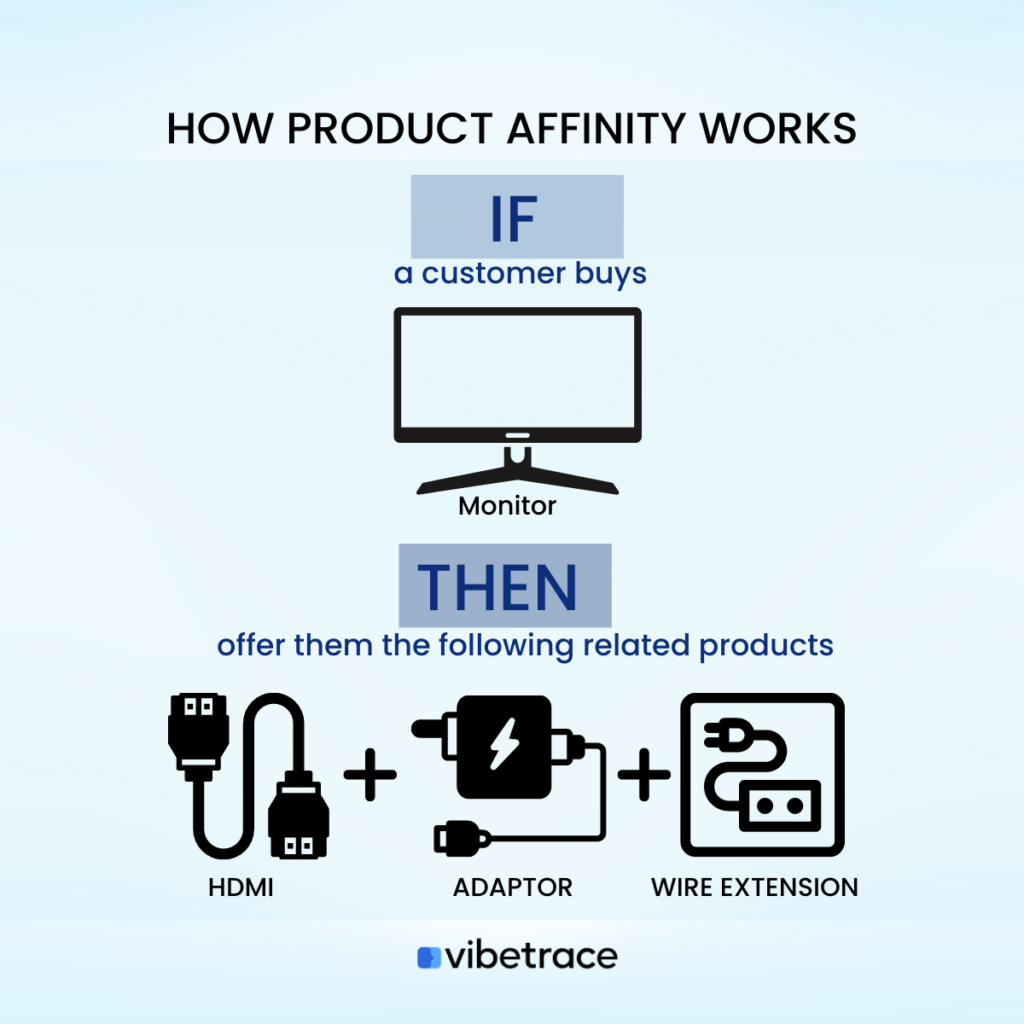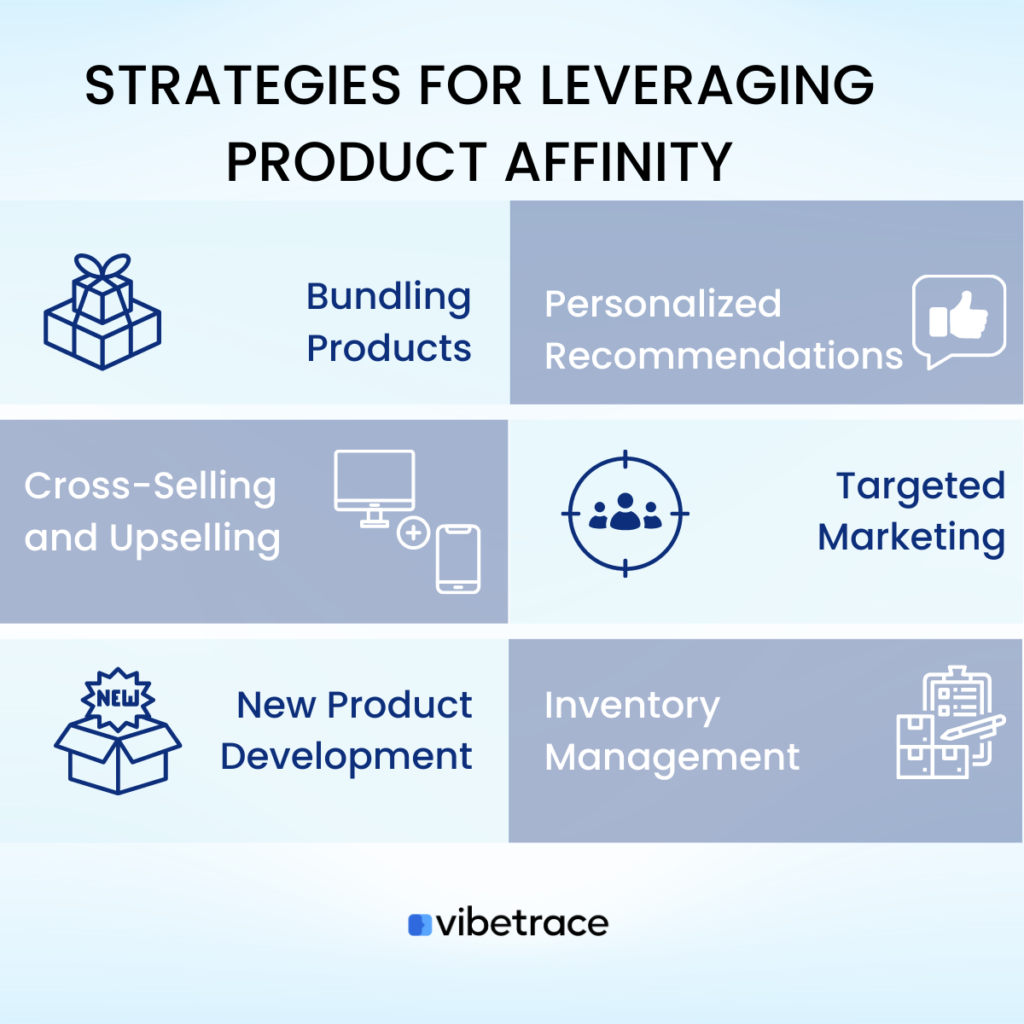Have you ever walked into a store and tried to pick out a product that you really need to have the sales person suggest another one?
Or maybe something you just thought of buying, and the salesperson suggest a complementary product that is often bought together with the product you are planning to buy?
This is how product affinity works. It is often used by businesses to optimize their products and improve their marketing efforts.
It’s the process of determining what items are often purchased together in order to increase cross-sales. Can be done manually or through automated processes.
Running an eCommerce business can be challenging, especially when trying to gain the trust of customers so that they will continue to repurchase from your store.
However, it’s always best to provide customers with options they cannot resist, especially if these options are frequently purchased together with the product they are already interested in.
This can help customers maximize their experience with your products and increase your sales.
In fact, you can develop effective marketing and sales strategies that drive customer satisfaction and loyalty by identifying which products are often purchased together.
What is product affinity?
Definition of Product Affinity
Product affinity refers to the correlation between the purchase of one product and the likelihood of a customer purchasing another related or complementary product.
In simpler terms, it is the tendency of customers to buy a set of products together due to their association with each other.
This correlation is typically identified through data analysis techniques, which can help you understand which products are frequently purchased together and use that information to develop effective marketing and sales strategies.
Additionally, a group of products that are related and purchased together is often known to have a strong product affinity which can increase your average product value as well as your profit margin.
An example of this is products you might have seen on amazon or other Shopify shops with sections such as ‘frequently bought together’, ‘related items’, and ‘customers who bought this item also bought’.

Understanding Product affinity
Product affinity identifies relationships and patterns in customers’ purchasing behavior, which can be conceptualized using a conditional rule.
This rule can help your business to understand which products are frequently purchased together and how they can use this information to develop effective marketing and sales strategies.
For example, let’s say you own an online computer parts shop. The conditional rule might be:
IF [Computer Monitor] THEN [HDMI Cord, HDMI Adaptor, Wire Extension]

These products are related, so when a customer buys a desktop, they may also need complementary products such as an HDMI Adaptor, HDMI Cord, and Extension.
You can increase customer loyalty and engagement by ensuring that customers do not miss out on products they may need in the future. This can also increase profitability, as customers are more likely to purchase complementary products from the same store.
Simply put, product affinity is a great marketing technique that can increase the average order value of your customer purchases.
Importance of Product Affinity
Product affinity can be a powerful tool for your business seeking to increase revenue, improve customer engagement, and enhance the overall customer experience.
Your business can gain insights on how to improve promotions, launch new products, and engage in cross-selling and upselling.
Tracking product affinity can also help you maximize your business potential for sales revenue and profitability. It can provide ideas for remarketing to customers on the business’s website and via email marketing campaigns.
For example, Vibetrace offers a smooth flow for email marketing campaigns, making it easier for any business to leverage its knowledge of product affinity.
Benefits of Using Product Affinity
Product affinity can bring several benefits to businesses. Here are some of the key benefits:
- Increased Revenue: You can provide complimentary items to customers by recognizing products that are frequently purchased together, which can improve the average order value in order to generate more revenue.
- Improved Customer Engagement: When you offer complementary products to customers, it shows that you understand their needs and can anticipate their future requirements. This can improve customer engagement and create a more positive shopping experience.
- Enhanced Marketing Efforts: Knowing which products are often purchased together can help you develop more effective marketing campaigns. They can tailor their promotions to target customers who are most likely to be interested in specific products.
Strategies for leveraging Product Affinity

There are several strategies that you can use to leverage product affinity. Here are some of the most effective ones:
Bundling Products: You can bundle products that are often purchased together and offer them at a discounted price. This can encourage customers to purchase more products and increase the average order value.
Personalized Recommendations: You can offer personalized product recommendations to customers. These recommendations can be based on a customer’s previous purchases or products that are often purchased together.
Cross-Selling and Upselling: Product affinity data can be used to identify complementary products that can be cross-sold or upsold to customers. For example, a customer who purchases a camera may also be interested in purchasing a tripod or additional lenses.
Targeted Marketing: You can use product affinity data to develop targeted marketing campaigns that are tailored to specific customer segments. For example, customers who purchase pet food may be interested in purchasing pet toys or accessories.
New Product Development: You can identify gaps in your product offerings and develop new products that complement your existing ones. This can help attract new customers and increase revenue.
Inventory Management: Product affinity data can be used to optimize inventory management practices. You can ensure that you have enough stock of complementary products and avoid stockouts.
Other Metrics to Analyze Alongside Product Affinity
Here are some metrics that you can consider tracking alongside product affinity:
Customer Lifetime Value
The estimated total value of a customer to a business over the course of their lifetime
Churn Rate
The percentage of customers who stop using a product or service over a given time period.
Average Order Value
Net Promoter Score
Repeat Purchase Rate
The percentage of customers who make more than one purchase from your website.
Another way of leveraging Product Affinity is through email marketing. It’s one of the best options to target people based on their interests. So choose an email automation software that will help you with your business goals like Vibetrace.
Vibetrace is a marketing automation platform that can help you strategize and strengthen product affinity through email campaigns.
Vibetrace can automatically send personalized product recommendations to customers based on their past purchases or browsing history. This can help you increase sales and improve customer satisfaction.
If you wish to learn more and get a regular update on vibetrace promo updates, Join our mailing list now!

